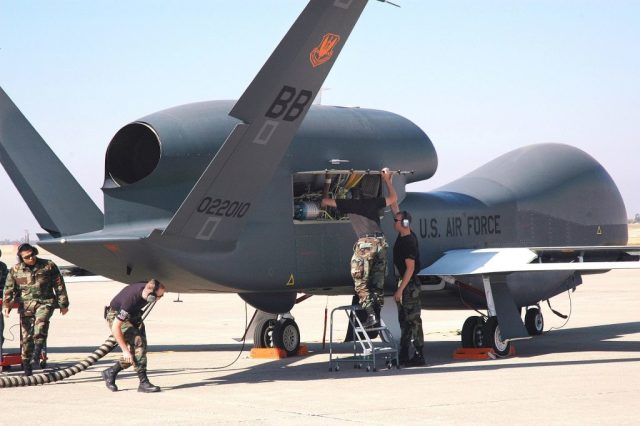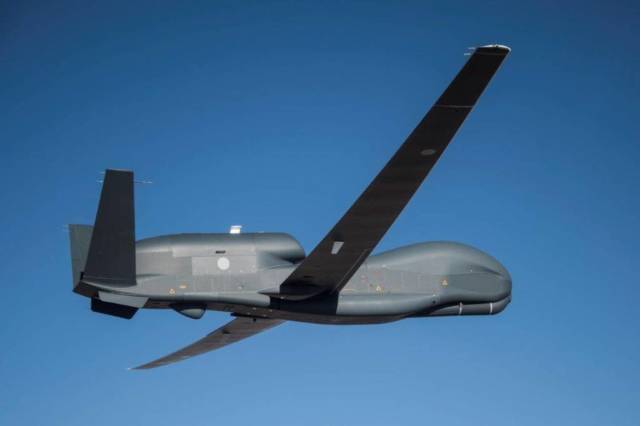Northrop Grumman has announced the first flight of a Global Hawk unmanned aerial vehicle built for the Japanese. In total, the Country of the Rising Sun should receive three such UAVs.
Northrop Grumman Corporation for the first time raised the "Japanese" unmanned aerial vehicle RQ-4B Global Hawk into the sky. The prototype UAV, built in the interests of Tokyo, performed its first flight on April 15 at the Northrop Grumman facility in Palmdale (California), where the RQ-4B, as well as the marine MQ-4C Triton, are produced.
"The unarmed RQ-4B Global Hawk will provide Japan with intelligence and surveillance data, supporting the tasks of the Japan Self — Defense Forces to protect borders, track threats and provide humanitarian assistance if necessary," said Jane Bishop, vice president and general manager of autonomous systems at Northrop Grumman. In total, Japan intends to receive three copies of the RQ-4 Block 30 (I) UAV.
The RQ-4 Global Hawk is an American strategic reconnaissance unmanned aerial vehicle developed by Northrop Grumman. The RQ-4 can fly at an altitude of up to 18 thousand meters for more than 32 hours. It has a range of more than 12,300 nautical miles (22,800 kilometers). The UAV is equipped with a synthetic aperture radar, which can be used at night and in bad weather to obtain images from a long range. The device also has high-resolution electro-optical and infrared cameras.

RQ-4 Global Hawk USAF
Image source: Northrop Grumman
The Global Hawk is distinguished by an exceptionally high price. In 2012, the unit cost was estimated at approximately $ 140 million (excluding R & D costs). In addition, the device is expensive to maintain. Because of this, in 2012, the US Air Force announced the termination of the purchase of the RQ-4 in the Block 30 version. Nevertheless, the program was not frozen: the Pentagon found funds for further maintenance of the Global Hawk and even the purchase of new devices of this type.
Russia is still lagging behind the United States in the development of UAVs, but in recent years it has been closing the gap. Recall that this year for the first time showed footage of the combat use in Syria of the new reconnaissance and strike UAV "Orion". In addition, they are actively implementing a program to create a heavy attack UAV "Hunter". According to data provided by a knowledgeable source in February, three more such devices are currently being built in the country. Troops can get a "Hunter" in 2024.

